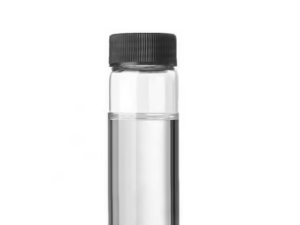Description
Cyclohexane: A Versatile Building Block in Chemistry
Cyclohexane is a fascinating and vital cycloalkane, a ring-shaped hydrocarbon, with the chemical formula C₆H₁₂. This colorless and flammable liquid plays a significant role in various chemical processes and finds application in numerous industries. While seemingly simple in its structure, cyclohexane’s properties are rich and influenced by the interplay of its molecular conformation.
Structure and Conformation:
Unlike its planar depiction in textbooks, cyclohexane adopts a non-planar, three-dimensional structure. This is due to the tetrahedral geometry around each carbon atom. The most stable conformation is the chair conformation, which minimizes torsional strain by staggering all the bonds and minimizing steric hindrance. The chair conformation is remarkably dynamic, undergoing rapid “ring flipping” where the molecule rapidly interconverts between two equivalent chair forms. This process involves the interchange of axial and equatorial substituents on the ring.
Understanding these conformational preferences is crucial for understanding the reactivity and properties of cyclohexane derivatives. Axial substituents experience greater steric hindrance, leading to a preference for larger substituents to occupy the equatorial position.
Properties and Applications:
Cyclohexane exhibits a range of valuable properties that contribute to its diverse applications.
- Solvent: Its non-polar nature makes it an excellent solvent for other non-polar substances, including oils, fats, waxes, and resins. It’s commonly used in the production of plastics, paints, and varnishes.
- Intermediate in Chemical Synthesis: Cyclohexane serves as a key intermediate in the production of adipic acid and caprolactam, both essential monomers for the production of nylon.
- Reagent in Chemical Reactions: It can be used as a reagent in certain chemical reactions, such as the Wurtz reaction, for the synthesis of larger alkanes.
- Component of Petroleum: It is a naturally occurring constituent of crude oil and is obtained commercially through the catalytic hydrogenation of benzene.
Industrial Production:
The primary method for the production of cyclohexane is the catalytic hydrogenation of benzene. This process involves reacting benzene with hydrogen gas in the presence of a nickel catalyst at elevated temperatures and pressures. This highly efficient process ensures a readily available supply of cyclohexane for its various industrial applications.
Health and Safety Considerations:
While a versatile chemical, cyclohexane requires careful handling. It is flammable and can form explosive mixtures with air. Direct exposure to cyclohexane can cause irritation to the skin, eyes, and respiratory tract. Inhalation of high concentrations can lead to dizziness, headache, and even unconsciousness. Therefore, proper ventilation, protective equipment, and safe handling practices are essential when working with cyclohexane.
Looking Ahead:
Cyclohexane continues to be a cornerstone in the chemical industry. Ongoing research focuses on developing more efficient and sustainable methods for its production and exploring its potential in novel applications. Its unique conformational properties also make it a valuable model system for studying organic molecules and understanding the principles of stereochemistry.
In conclusion, cyclohexane is more than just a simple hydrocarbon. It’s a versatile building block with a complex three-dimensional structure that influences its properties and reactivity. Its widespread applications in various industries highlight its importance in modern chemistry and its continued relevance in the future. As research and development continue, cyclohexane is poised to remain a vital and versatile molecule for years to come.
















Reviews
There are no reviews yet.